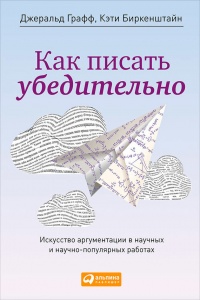Читать книгу "Как микробы управляют нами. Тайные властители жизни на Земле - Эд Йонг"
Шрифт:
Интервал:
Закладка:
Kotula, J.W., Kerns, S.J., Shaket, L.A., et al. (2014) ‘Programmable bacteria detect and record an environmental signal in the mammalian gut’, Proc. Natl. Acad. Sci. 111, 4838–4843.
Kozek, W.J. (1977) ‘Transovarially-transmitted intracellular microorganisms in adult and larval stages of Brugia malayi’, J. Parasitol. 63, 992–1000.
Kozek, W.J., Rao, R.U. (2007) ‘The Discovery of Wolbachia in arthropods and nematodes – a historical perspective’, in Wolbachia: A Bug’s Life in another Bug, A. Hoerauf, R. U. Rao, eds., pp. 1–14 (Basel: Karger).
Kremer, N., Philipp, E.E.R., Carpentier, M-C., et al. (2013) ‘Initial symbiont contact orchestrates host – organ-wide transcriptional changes that prime tissue colonization’, Cell Host Microbe 14, 183–194.
Kroes, I., Lepp, P.W., Relman, D.A. (1999) ‘Bacterial diversity within the human subgingival crevice’, Proc. Natl. Acad. Sci. 96, 14547–14552.
Kruif, P.D. (2002) Microbe Hunters (Boston: Houghton Mifflin Harcourt).
Kueneman, J.G., Parfrey, L.W., Woodhams, D.C., et al. (2014) ‘The amphibian skin-associated microbiome across species, space and life history stages’, Mol. Ecol. 23, 1238–1250.
Kunz, C. (2012) ‘Historical aspects of human milk oligosaccharides’, Adv. Nutr. Int. Rev. J.3, 430S – 439S.
Kunzig, R. (2000) Mapping the Deep: The Extraordinary Story of Ocean Science (New York: W. W. Norton & Co.).
Kuss, S.K., Best, G.T., Etheredge, C.A., et al. (2011) ‘Intestinal microbiota promote enteric virus replication and systemic pathogenesis’, Science 334, 249–252.
Kwong, W.K., Moran, N.A. (2015) ‘Evolution of host specialization in gut microbes: the bee gut as a model’, Gut Microbes 6, 214–220.
Lander, E.S., Linton, L.M., Birren, B., et al. (2001) ‘Initial sequencing and analysis of the human genome’, Nature 409, 860–921.
Lane, N. (2015a) The Vital Question: Why Is Life the Way It Is? (London: Profile Books).
Lane, N. (2015b) ‘The unseen world: reflections on Leeuwenhoek (1677) “Concerning little animals” ’ Philos. Trans. R. Soc. B Biol. Sci. 370.
Lang, J.M., Eisen, J.A., Zivkovic, A.M. (2014) ‘The microbes we eat: abundance and taxonomy of microbes consumed in a day’s worth of meals for three diet types’, PeerJ 2, e659.
Lawley, T.D., Clare, S., Walker, A.W., et al. (2012) ‘Targeted restoration of the intestinal microbiota with a simple, defined bacteriotherapy resolves relapsing Clostridium difficiledisease in mice’, PLoS Pathog. 8, e1002995.
Lax, S., Gilbert, J.A. (2015) ‘Hospital-associated microbiota and implications for nosocomial infections’, Trends Mol. Med. 21, 427–432.
Lax, S., Sangwan, N., Smith, D., et al. (2017) ‘Bacterial colonization and succession in a newly opened hospital’, Sci. Transl. Med. 9, eaah6500.
Lax, S., Smith, D.P., Hampton-Marcell, J., et al. (2014) ‘Longitudinal analysis of microbial interaction between humans and the indoor environment’, Science 345, 1048–1052.
Le Chatelier, E., Nielsen, T., Qin, J., et al. (2013) ‘Richness of human gut microbiome correlates with metabolic markers’, Nature 500, 541–546.
Le Clec’h, W., Chevalier, F.D., Genty, L., et al. (2013) ‘Cannibalism and predation as paths for horizontal passage of Wolbachia between terrestrial isopods’, PLoS ONE 8, e60232.
Lee, Y.K., Mazmanian, S.K. (2010) ‘Has the microbiota played a critical role in the evolution of the adaptive immune system?’, Science 330, 1768–1773.
Lee, B.K., Magnusson, C., Gardner, R.M., et al. (2015) ‘Maternal hospitalization with infection during pregnancy and risk of autism spectrum disorders’, Brain. Behav. Immun. 44, 100–105.
Leewenhoeck, A. van (1677) ‘Observation, communicated to the publisher by Mr. Antony van Leewenhoeck, in a Dutch letter of the 9 Octob. 1676 here English’d: concerning little animals by him observed in rain-well-sea and snow water; as also in water wherein pepper had lain infused’, Phil. Trans. 12, 821–831.
Leewenhook, A. van (1674), More Observations from Mr. Leewenhook, in a Letter of Sept. 7, 1674, sent to the Publisher’, Phil. Trans. 12, 178–182.
Lemon, K.P., Armitage, G.C., Relman, D.A., Fischbach, M.A. (2012) ‘Microbiota-targeted therapies: an ecological perspective’, Sci. Transl. Med. 4, 137rv5.
LePage, D., Bordenstein, S.R. (2013) ‘Wolbachia: can we save lives with a great pandemic?’, Trends Parasitol. 29, 385–393.
Leroi, A.M. (2014) The Lagoon: How Aristotle Invented Science (New York: Viking Books).
Leroy, P.D., Sabri, A., Heuskin, S., et al. (2011) ‘Microorganisms from aphid honeydew attract and enhance the efficacy of natural enemies’, Nat. Commun. 2, 348.
Ley, R.E., Bäckhed, F., Turnbaugh, P., et al. (2005) ‘Obesity alters gut microbial ecology’, Proc. Natl. Acad. Sci. 102, 11070–11075.
Ley, R.E., Peterson, D.A., Gordon, J.I. (2006) ‘Ecological and evolutionary forces shaping microbial diversity in the human intestine’, Cell 124, 837–848.
Ley, R.E., Hamady, M., Lozupone, C., et al. (2008a) ‘Evolution of mammals and their gut microbes’, Science 320, 1647–1651.
Ley, R.E., Lozupone, C.A., Hamady, M., et al. (2008b) ‘Worlds within worlds: evolution of the vertebrate gut microbiota’, Nat. Rev. Microbiol. 6, 776–788.
Li, J., Jia, H., Cai, X., et al. (2014) ‘An integrated catalog of reference genes in the human gut microbiome’, Nat. Biotechnol. 32, 834–841.
Linz, B., Balloux, F., Moodley, Y., et al. (2007) ‘An African origin for the intimate association between humans and Helicobacter pylori’, Nature 445, 915–918.
Liou, A.P., Paziuk, M., Luevano, J.-M., et al. (2013) ‘Conserved shifts in the gut microbiota due to gastric bypass reduce host weight and adiposity’, Sci. Transl. Med. 5, 178ra41.
Login, F.H., Heddi, A. (2013) ‘Insect immune system maintains long-term resident bacteria through a local response’, J. Insect Physiol. 59, 232–239.
Lombardo, M.P. (2008) ‘Access to mutualistic endosymbiotic microbes: an underappreciated benefit of group living’, Behav. Ecol. Sociobiol. 62, 479–497.
Lyte, M., Varcoe, J.J., Bailey, M.T. (1998) ‘Anxiogenic effect of subclinical bacterial infection in mice in the absence of overt immune activation’, Physiol. Behav. 65, 63–68.
Ma, B., Forney, L.J., Ravel, J. (2012) ‘Vaginal microbiome: rethinking health and disease,’ Annu. Rev. Microbiol. 66, 371–389.
Malkova, N.V., Yu, C.Z., Hsiao, E.Y., et al. (2012) ‘Maternal immune activation yields offspring displaying mouse versions of the three core symptoms of autism’, Brain. Behav. Immun. 26, 607–616.
Внимание!
Сайт сохраняет куки вашего браузера. Вы сможете в любой момент сделать закладку и продолжить прочтение книги «Как микробы управляют нами. Тайные властители жизни на Земле - Эд Йонг», после закрытия браузера.




